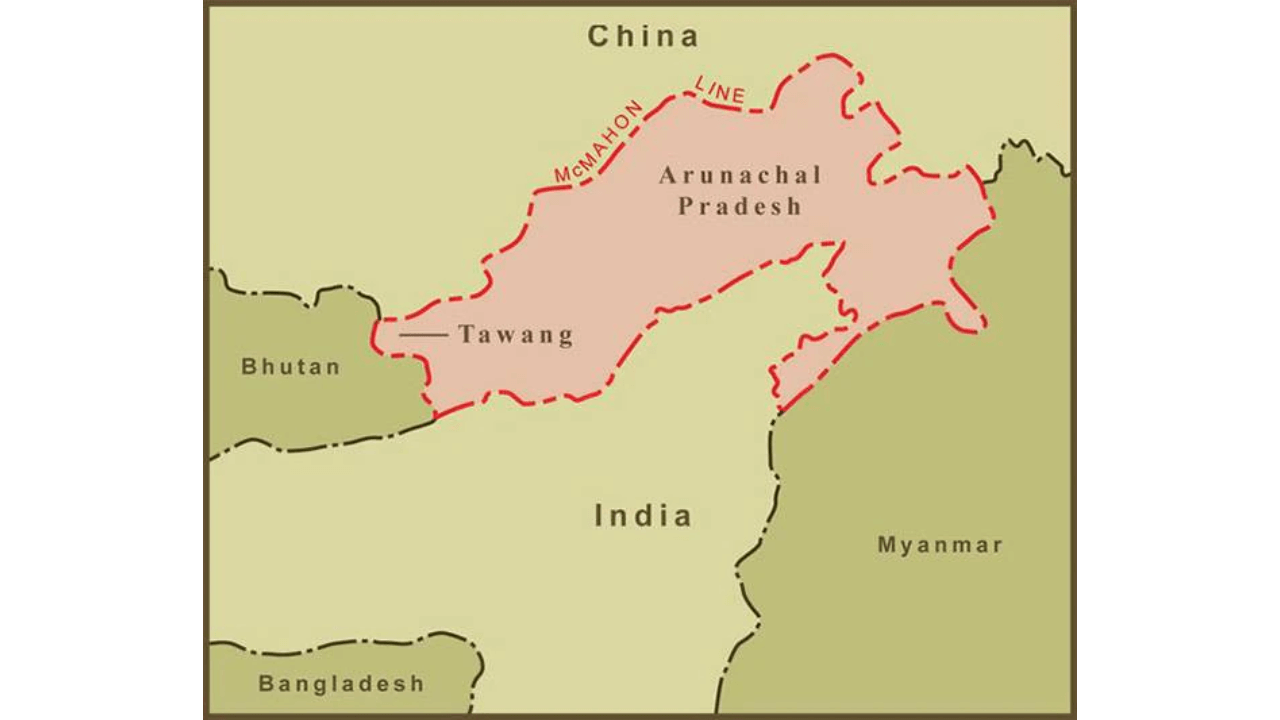China New Map
China’s recent release of its updated “standard map” in August 2023 has set off a wave of controversy, as it incorporates disputed territories such as Arunachal Pradesh, Aksai Chin, Taiwan, and the South China Sea regions. This move has raised diplomatic concerns and revived ongoing disputes, bringing into focus China’s territorial assertions and their implications for global relations. This article delves into the details of China’s 2023 standard map and its potential impact on international dynamics.
Unveiling the 2023 Standard Map
On August 28, 2023, China introduced its latest official map, referred to as the 2023 edition, through the Ministry of Natural Resources’ standard map service website. Unlike traditional maps, this version employs a distinctive cartographic approach that outlines national boundaries in a manner that reflects China’s perspective on global geography. However, rather than being merely a geographical representation, this unveiling has sparked intense debate due to the territories it encompasses.
Inclusion of Contested Territories: China’s New Map
Central to the controversy surrounding China’s 2023 standard map is its deliberate inclusion of territories subject to disputes. Notably, the map portrays regions like Arunachal Pradesh, Aksai Chin, Taiwan, and various parts of the South China Sea as integral parts of China’s sovereign territory. This explicit depiction challenges established international positions and confronts neighboring nations with a firm assertion of China’s claims.
Resurfacing Diplomatic Concerns and Disputes
The release of the updated standard map has revived diplomatic tensions and reopened existing disputes between China and its neighboring countries. Nations like India, which have competing territorial claims over regions such as Arunachal Pradesh and Aksai Chin, have strongly criticized the map’s portrayal. Similarly, Taiwan, an island with self-governance that China asserts as part of its own territory, has vehemently opposed the map’s depiction.
Moreover, the incorporation of disputed areas within the South China Sea introduces the potential for escalating conflicts in a region already marked by instability. China’s territorial ambitions in these waters have faced opposition from several nations, including the Philippines, Vietnam, and Malaysia, all of which have competing maritime claims. By depicting these regions as its own, China’s map could inflame ongoing disputes and hinder diplomatic resolutions.
Global Diplomatic Implications
China’s release of the 2023 edition standard map carries significant diplomatic implications on a global scale. The bold inclusion of disputed territories challenges the existing diplomatic status quo and sets the stage for potential confrontations. The international community is closely observing China’s actions, with responses likely to shape the trajectory of international relations.
While some may interpret the map as a symbolic move to assert sovereignty, its portrayal of territorial claims at odds with established international norms raises questions about China’s diplomatic intentions. The extent to which the map influences peaceful negotiations and diplomatic efforts to address ongoing disputes remains a critical concern.
Conclusion: China’s New Map
China’s unveiling of the 2023 edition standard map has triggered international controversy by incorporating disputed territories and challenging existing diplomatic positions. The map’s depiction of areas like Arunachal Pradesh, Aksai Chin, Taiwan, and the South China Sea regions raises diplomatic concerns and rekindles longstanding disputes. As the global community evaluates the situation, the implications for regional stability and international diplomacy remain under scrutiny. Navigating a path forward will require open dialogue and a commitment to peaceful resolutions, ensuring that diplomatic solutions prevail over territorial contentions.
- Indian Bank Recruitment 2025 Out for 1500 Apprentice Posts
- Indian Bank Apprentice Salary 2025, Pay Scale, Salary Structure
- Indian Bank Apprentice Syllabus & Exam Pattern 2025, Check Details
- Railway RPF Syllabus 2024, Check Exam Pattern, Topic And Syllabus
- SSC JE vs RRB JE, Which Is Better? Know Detailed Comparison

